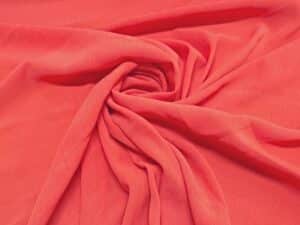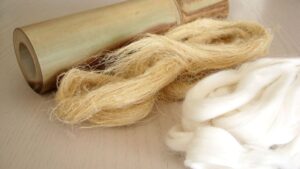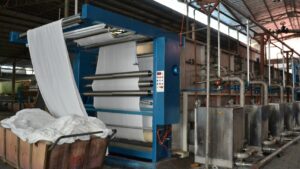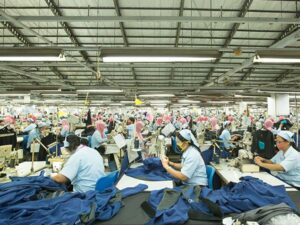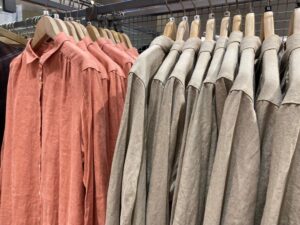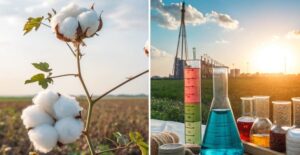
Understanding the differences between organic and conventional cotton is essential for making informed decisions in clothing manufacturing. Reported by ICAC(International Cotton Advisory Committee), in 2020/21 Organic cotton accounts for only 1.4% of overall cotton production, while conventional cotton dominates the market. This disparity highlights the need to evaluate their unique impacts. Organic cotton farming avoids synthetic pesticides and genetically modified seeds, reducing chemical pollution and preserving soil health. It also uses efficient irrigation systems, lowering water consumption. These practices not only benefit the environment but also support small-scale farmers by offering fair prices and access to niche markets. Choosing organic cotton in clothing manufacturing can also appeal to consumers seeking skin-friendly, chemical-free fabrics.
Key Takeaways
Organic cotton farming skips harmful chemicals, helping the environment and making safer products.
Picking organic cotton helps small farmers get fair pay and follow ethical rules.
Even though it costs more to make, organic cotton attracts eco-friendly buyers and boosts brand value.
Knowing your customers is key; match your cotton choice to their need for eco-friendliness or low cost.
1. Conventional Cotton: Production and Impact
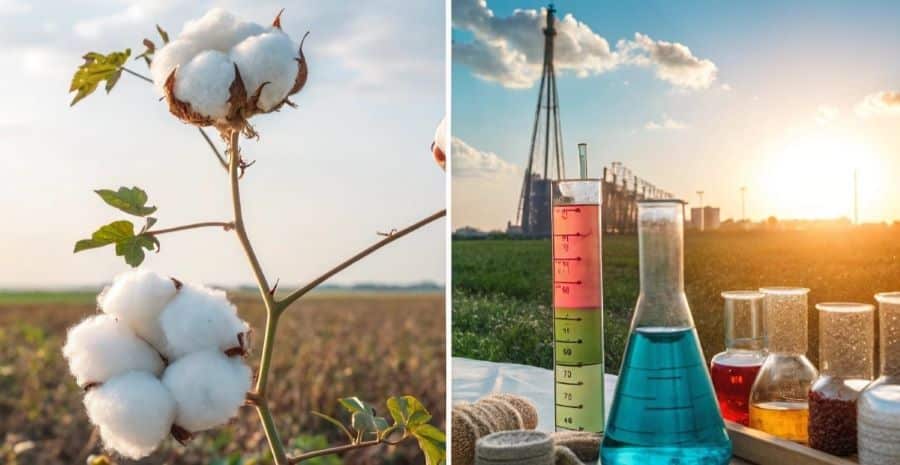
1.1 Farming Practices
1.1.1 Use of synthetic pesticides and fertilizers
You may not realize it, but regular cotton farming relies heavily on synthetic pesticides and fertilizers. These chemicals help protect crops from pests and boost yields. However, their widespread use comes at a cost. Conventional Cotton production occupies 2.4% of the world’s agricultural land but uses 4.7% of the world’s pesticides, and specifically 10% of the world’s insecticides. This overuse harms the environment and poses risks to farmers' health.
1.1.2 Genetically modified seeds and their role
Genetically modified (GM) seeds play a significant role in conventional cotton farming. These seeds are engineered to resist pests and tolerate herbicides, making farming more efficient. While GM seeds increase productivity, they also create dependency on seed companies. Small-scale farmers often struggle to afford these seeds, which can lead to financial strain.
1.2 Environmental and Social Effects
1.2.1 Soil degradation and water pollution
Conventional cotton farming has a measurable impact on soil and water quality. The heavy use of chemicals depletes soil nutrients, leading to long-term degradation. Additionally, waste from cotton production contaminates freshwater resources. This pollution affects both human and wildlife health, creating a ripple effect on ecosystems.
1.2.2 Impact on Ethics
The effects of regular cotton farming extend beyond the environment. It employs about 30 million farmers, mostly in developing nations. The industry faces ethical challenges.
1.3 Production Scale and Cost
1.3.1 High yields and widespread availability
Conventional cotton farming offers high yields, making it widely available for clothing manufacturers. Its large-scale production ensures a steady supply of raw materials, which is essential for meeting global demand.
1.3.2 Cost-effectiveness in large-scale production
You’ll find that conventional cotton products are cost-effective for large-scale production. The use of GM seeds and synthetic chemicals reduces labor costs and increases efficiency. This affordability makes regular cotton a popular choice for brands and manufacturers aiming to produce clothing at competitive prices.
2. Organic Cotton in Clothing Manufacturing
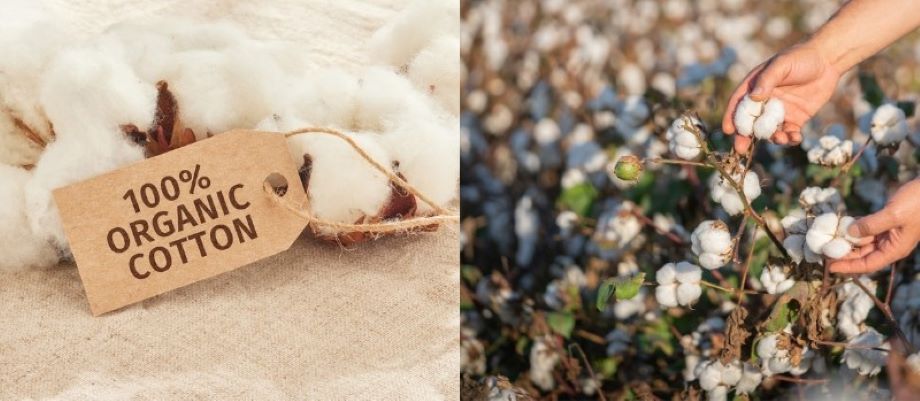
2.1 Farming Practices
2.1.1 Use of natural fertilizers and pest control
When you look at how the cotton is grown organically, you’ll notice a stark difference in farming methods. Organic cotton relies on natural fertilizers like compost and manure, which enrich the soil without introducing harmful chemicals. Instead of synthetic pesticides, farmers use natural pest control methods, such as introducing beneficial insects or using plant-based repellents. These practices not only protect the crops but also maintain the health of the surrounding ecosystem.
Unlike conventional cotton, organic cotton avoids chemical defoliants. Farmers wait for natural temperature changes to defoliate the plants, which can be riskier but is far more sustainable.
2.1.2 Non-GMO (Genetically Modified Organism) seeds and sustainable crop rotation
Organic cotton farming exclusively uses non-GMO seeds, ensuring that the crops remain natural and free from genetic modifications. This approach supports biodiversity and reduces dependency on large seed corporations. Sustainable crop rotation is another key practice. By alternating crops, farmers improve soil fertility and structure, which helps in maintaining long-term productivity. These methods demonstrate how the cotton is produced with a focus on environmental sustainability.
2.2 Environmental and Social Benefits
2.2.1 Soil health and biodiversity preservation
Organic cotton farming significantly enhances soil health. The absence of synthetic fertilizers preserves soil structure and fertility. Techniques like using compost and cover crops enrich the soil, promoting a diverse ecosystem. Organic farming also supports a thriving soil microbiome, essential for nutrient cycling. By avoiding harmful chemicals, organic cotton farming encourages the growth of beneficial insects and wildlife, contributing to a balanced ecosystem.
2.2.2 Ethical farming and fair trade practices
Ethical farming practices in organic cotton production offer numerous social benefits. Farmers receive fair wages, and direct trade relationships eliminate exploitative middlemen. Many organic cotton initiatives also support social development programs, improving the livelihoods of local communities. Fairtrade certification ensures transparency in supply chains and promotes sustainable environmental practices. These efforts not only benefit farmers financially but also enhance their quality of life.
2.3 Production Challenges and Costs
2.3.1 Lower yields and higher labor intensity
Organic cotton farming faces challenges due to lower yields compared to conventional methods. The absence of synthetic chemicals and GM seeds means that crops grow more slowly and require more manual labor. This increases production costs, which are often passed on to consumers.
2.3.2 Certification requirements and associated costs
Obtaining organic certification is another hurdle. Farmers must adhere to strict guidelines, which can be time-consuming and expensive. The certification process often involves audits and documentation, adding to the overall cost. Additionally, the economic system does not account for the environmental and social costs of conventional cotton, making organic cotton appear more expensive. Despite these challenges, organic cotton in clothing manufacturing remains a vital step toward sustainability.
Farm-Level Certifications
USDA National Organic Program (NOP): Governs organic production in the US, ensuring no synthetic pesticides or fertilizers are used.
European Union (EU) Organic Regulation: Sets standards for organic farming across EU countries, recognized globally.
Japanese Agricultural Standard (JAS): Defines organic production in Japan, aligning with international norms.
Other IFOAM-Recognized Standards: Various national standards recognized by the International Federation of Organic Agriculture Movements, ensuring global consistency.
Product-Level Certifications
Global Organic Textile Standard (GOTS): Covers the entire process from farm to finished product, ensuring organic and social criteria are met.
OEKO-TEX Organic Cotton: Verifies organic cotton use, testing for GMOs and harmful substances with farm-to-product traceability.
Organic Content Standard (OCS): Tracks organic content, verifying the claimed amount of organic cotton in the product.
3. Comparing Organic Cotton and Conventional Cotton
3.1 Quality
3.1.1 Durability and softness
When comparing the quality of organic cotton and conventional cotton, you’ll notice differences in durability and softness. Organic cotton often feels softer because it avoids harsh chemical treatments during production. This lack of chemicals allows the fibers to remain longer and stronger, resulting in a fabric that withstands wear and tear better. High-quality cotton, whether organic or conventional, can also feel soft if processed correctly. However, organic cotton tends to feel gentler on sensitive skin, making it a preferred choice for individuals with allergies or irritation concerns.
3.1.2 Suitability for various clothing types
The suitability of organic cotton for different clothing types depends on the length of its fibers. Shorter-staple organic cotton fibers may produce rougher and less durable fabrics. On the other hand, extra-long staple varieties, such as pima and Supima, create smoother and stronger fabrics but are harder to grow organically. Conventional cotton often offers more options for high-quality cotton fabrics due to its widespread availability and processing techniques. Organic cotton works well for casual wear and baby clothing, while conventional cotton may dominate in high-performance or luxury apparel.
3.2 Environmental Impact
3.2.1 Water usage and pollution
Techniques like crop rotation and nutrient-rich soil help retain moisture, reducing the need for irrigation. Conventional cotton, however, depletes soil quality and contaminates water sources with chemicals, leading to significant environmental impact. Organic practices also reduce water pollution by preventing soil erosion and nutrient leaching, making it a more sustainable choice for water conservation.
3.2.2 Carbon footprint and sustainability
The carbon footprint of organic cotton is significantly lower than that of conventional cotton. For instance, organic cotton farming in Kyrgyzstan emits only 1.15 kg of CO2 per kilogram of cotton, compared to 6.07 kg in the United States for conventional cotton. This stark difference highlights the sustainability of organic cotton. By avoiding synthetic chemicals and promoting soil health, organic farming reduces greenhouse gas emissions and fosters long-term environmental resilience.
3.3 Cost Considerations
3.3.1 Production costs and market prices
Organic cotton production is more expensive due to lower crop yields, labor-intensive farming methods, and certification expenses. These factors drive up the price of organic cotton products. Conventional cotton, with its higher yields and reliance on synthetic chemicals, offers a more cost-effective option for large-scale production. However, the environmental and social costs of conventional cotton often remain hidden, making organic cotton appear pricier.
3.3.2 Long-term value for manufacturers
Despite its higher upfront costs, organic cotton provides long-term value for brands. By preserving soil health and fostering resilience against environmental challenges, organic cotton ensures sustainable farming practices. It also commands higher market prices, appealing to eco-conscious consumers. Additionally, the absence of synthetic chemicals can reduce some production costs over time, making organic cotton a worthwhile investment for businesses prioritizing sustainability.
3.4 Health and Safety
3.4.1 Skin-friendliness and hypoallergenic properties
Organic cotton offers significant health advantages, especially for individuals with sensitive skin or allergies.
It is hypoallergenic, making it a safer choice for those prone to skin irritations.
The absence of synthetic pesticides and toxic dyes reduces the risk of allergic reactions.
Its softness and breathability enhance comfort, making it ideal for baby clothing and casual wear.
Conventional cotton, on the other hand, often contains residues of harmful chemicals. These substances can irritate the skin and may even be absorbed into the body. By choosing organic cotton products, you avoid exposure to these potentially harmful elements, ensuring a safer experience for your skin.
3.4.2 Reduced exposure to harmful chemicals
The benefits of organic cotton extend beyond consumers to the workers who cultivate it.
Farmers and laborers face fewer health risks since organic farming avoids toxic pesticides and herbicides.
In regions like India, where pesticide poisoning is common, organic practices save lives and improve working conditions.
For consumers, organic cotton ensures safer products free from harmful residues.
By supporting organic cotton, you contribute to a healthier environment for both workers and end-users. This choice promotes ethical farming and reduces the long-term health risks associated with conventional cotton farming.
3.5 Availability and Accessibility
3.5.1 Global supply and demand trends
According to the report of "Organic Cotton Market (2024 Edition): Market Size, Trends, Opportunities and Forecast by Type, Quality, Application, Region, By Country: 2020-2030", the global organic cotton Market was valued at USD 1.32 billion in 2023, and is expected to grow at a CAGR of 44.4% during 2025-2030.
3.5.2 Accessibility for small and large manufacturers
Organic cotton farming creates opportunities for small-scale farmers, especially in developing countries.
Farmers gain access to niche markets and receive fair prices, improving their income and livelihoods.
Fairtrade certifications ensure better working conditions and help reduce poverty.
However, challenges remain.
Organic cotton products often cost much more due to sustainable farming methods and lower yields.
Limited availability of non-GMO seeds and market fluctuations restrict supply.
While organic cotton is gaining popularity in some regions, accessibility remains a hurdle for many manufacturers.
For large-scale manufacturers, incorporating organic cotton into product lines can align with consumer demand for sustainability. Small-scale producers can also benefit by targeting niche markets and emphasizing the ethical and environmental benefits of their products.
4. Choosing the Right Cotton for Clothing Manufacturing
4.1 Key Factors to Consider
4.1.1 Target market and consumer preferences
When choosing between organic cotton and conventional cotton, you need to consider your target market. Consumers increasingly prefer environmentally sustainable products. Organic cotton appeals to those seeking chemical-free fabrics that are safer for sensitive skin. Additionally, organic cotton certification assures buyers of ethical and sustainable practices. If your audience values affordability over sustainability, conventional cotton might be a better fit.
Environmental Impact: Organic cotton reduces chemical pollution and promotes sustainable practices.
Production Costs: Organic cotton costs more to produce, which can affect pricing strategies.
Health Implications: Organic cotton is free from harmful residues, making it ideal for sensitive consumers.
4.1.2 Budget and production scale
Your budget plays a crucial role in this decision. Organic cotton production involves higher costs due to organic certification and lower yields. These factors increase consumer prices, making it less appealing for budget-conscious manufacturers. Conventional cotton, with its efficiency and lower costs, suits large-scale production.
Higher production costs for organic cotton lead to increased prices.
Lower yields from organic farming reduce efficiency, impacting pricing and accessibility.
4.2 Balancing Sustainability with Profitability
4.2.1 Incorporating organic cotton into product lines
Incorporating organic cotton into your product lines can boost profitability. According to the report of "Organic Cotton Market (2024 Edition): Market Size, Trends, Opportunities and Forecast by Type, Quality, Application, Region, By Country: 2020-2030", the global organic cotton Market was valued at USD 1.32 billion in 2023, and is expected to grow at a CAGR of 44.4% during 2025-2030, offering lucrative opportunities. Organic cotton commands a higher price, appealing to eco-conscious consumers. Fair trade practices can further enhance profitability by adding a price premium for certified products.
4.2.2 Communicating sustainability efforts to consumers
Transparency is key to gaining consumer trust. Highlight your sustainability efforts by sharing details about organic cotton certification and environmentally sustainable practices. Certifications like GOTS assure buyers of chemical-free and ethically produced fabrics. As more brands embrace sustainable practices, organic cotton is becoming a cornerstone of green fashion.
Choosing between organic and conventional cotton requires you to weigh their unique characteristics. Organic cotton prioritizes environmental health, ethical farming, and consumer safety, while conventional cotton offers cost efficiency and high yields. Each option has distinct advantages and challenges.
Evaluate both environmental and economic factors carefully. By balancing sustainability with profitability, you can make decisions that benefit your business and the planet.
FAQ
What is the main difference between organic and conventional cotton?
Organic cotton avoids synthetic chemicals and uses sustainable farming practices. Conventional cotton relies on pesticides, fertilizers, and GM seeds for higher yields. Organic cotton prioritizes environmental health, while conventional cotton focuses on cost efficiency and large-scale production.
Why does organic cotton cost more than conventional cotton?
Organic cotton involves labor-intensive farming, lower yields, and certification expenses. These factors increase production costs. However, its environmental benefits and appeal to eco-conscious consumers justify the higher price.
Is organic cotton better for sensitive skin?
Yes, organic cotton is hypoallergenic and free from harmful chemical residues. It feels softer and reduces the risk of skin irritation, making it ideal for individuals with allergies or sensitive skin.
How can manufacturers balance sustainability with profitability?
You can incorporate organic cotton into select product lines to attract eco-conscious consumers. Highlight your sustainability efforts through transparent marketing. This approach allows you to meet demand while maintaining profitability.
Does organic cotton use less water than conventional cotton?
Yes, organic cotton uses 91% less water. Techniques like crop rotation and nutrient-rich soil help retain moisture, reducing irrigation needs. Conventional cotton depletes water resources and often pollutes them with chemicals.


